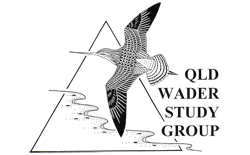Haematopus ostralegus
Subspecies
None
Other Names
Black-and-white Oystercatcher, White-breasted Oystercatcher, Redbill, Eugerie-bird, Seapie, Wong-bird, Oyk.
Identification
Large, distinctive black and white bird. Not easy to confuse with any other common Australian shorebird.
Plumage
Adult: The breast, neck and head are black, as are the mantle, shoulders, wing coverts and tail. The rest of the plumage is white , that is the back, belly and rump. The long straight bill is a bright red. The legs are pink through to red in the mature bird.
Juvenile: Similar to the adult but the black is duller as is the bill. The legs are grey.
Distribution
Found right around Australia, but is more commonly found in Victoria, South Australia and Tasmania. The Pied Oystercatcher prefers mudflats and sandy beaches, rarely being reported away from the shoreline.
Migratory habits
Resident wader that rarely undertakes large distances, though flights across Bass Straight have been recorded. It does fly locally to congregate during non-breeding periods.
Breeding
A scrape in sand above the high water mark is the commonest area to find a Pied Oystercatcher nest, though they will build in pastures behind a beach. The clutch is usually 2 eggs. A second clutch will be laid if the first nest is lost or the season good. Because the nest site is on the high tide mark there has been a increase in nest disturbance and loss due to four-wheel drive usage around Australia.
Status
The Pied Oystercatcher is now considered to be Vunerable, though its population is estimated to be around 10,000. As mentioned above disturbance is a great problem.
Confusing Species
Sooty Oystercatcher: Similar size and silhouette, but no white therefore should not be misidentified.

